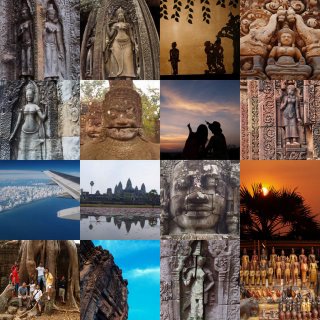

Unlike other temples at Angkor, Ta Prohm has been left as it was found, preserved as an example of what a tropical forest will do to an architectural monument when the protective hands of humans are withdrawn. Ta Prohm's walls, roofs, chambers and courtyards have been sufficiently repaired to stop further deterioration, and the inner sanctuary has been cleared of bushes and thick undergrowth, but the temple has been left in the stranglehold of trees. Having planted themselves centuries ago, the tree's serpentine roots pry apart the ancient stones and their immense trunks straddle the once bustling Buddhist temple. Built in the later part of the 12th century by Jayavarman VII, Ta Prohm is the terrestrial counterpart of the star Eta Draconis the Draco constellation.







